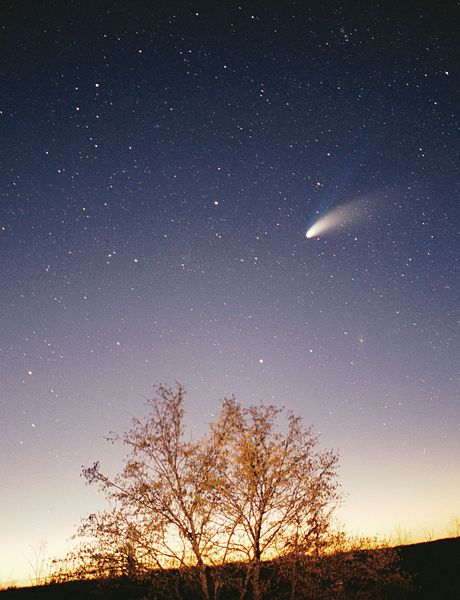Scientists have discovered a ‘cosmic factory’ for producing the building blocks of life, amino acids, in research published today in the journal Nature Geoscience.
The team from Imperial College London, the University of Kent and Lawrence Livermore National Laboratory have discovered that when icy comets collide into a planet, amino acids can be produced. These essential building blocks are also produced if a rocky meteorite crashes into a planet with an icy surface.
The researchers suggest that this process provides another piece to the puzzle of how life was kick-started on Earth, after a period of time between 4.5 and 3.8 billion years ago when the planet had been bombarded by comets and meteorites.
Dr Zita Martins, co-author of the paper from the Department of Earth Science and Engineering at Imperial College London, says: “Our work shows that the basic building blocks of life can be assembled anywhere in the Solar System and perhaps beyond. However, the catch is that these building blocks need the right conditions in order for life to flourish. Excitingly, our study widens the scope for where these important ingredients may be formed in the Solar System and adds another piece to the puzzle of how life on our planet took root.”
Dr Mark Price, co-author from the University of Kent, adds: “This process demonstrates a very simple mechanism whereby we can go from a mix of simple molecules, such as water and carbon-dioxide ice, to a more complicated molecule, such as an amino acid. This is the first step towards life. The next step is to work out how to go from an amino acid to even more complex molecules such as proteins.”
The abundance of ice on the surfaces of Enceladus and Europa, which are moons orbiting Saturn and Jupiter respectively, could provide a perfect environment for the production of amino acids, when meteorites crash into their surface, say the researchers. Their work further underlines the importance of future space missions to these moons to search for signs of life.
The researchers discovered that when a comet impacts on a world it creates a shock wave that generates molecules that make up amino acids. The impact of the shock wave also generates heat, which then transforms these molecules into amino acids.
The team made their discovery by recreating the impact of a comet by firing projectiles through a large high speed gun. This gun, located at the University of Kent, uses compressed gas to propel projectiles at speeds of 7.15 kilometres per second into targets of ice mixtures, which have a similar composition to comets. The resulting impact created amino acids such as glycine and D-and L-alanine.


